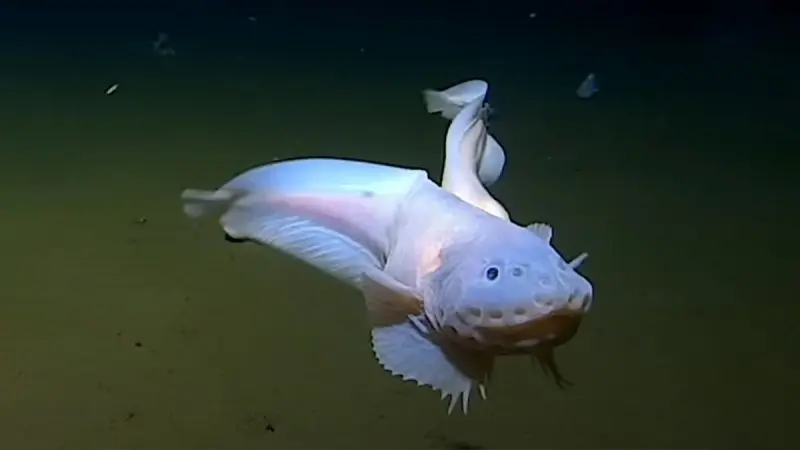This young specimen from the family Liparidae, commonly known as sea slugs, belongs to the genus Pseudoliparis. Currently, it holds the title of the deepest fish ever recorded. The previous record holder was also a sea slug, residing in the Mariana Trench at a depth of 8,178 meters, captured on camera by marine biologists in 2017. Fresh footage of this sea slug was released by a team of scientists from the University of Western Australia and the Tokyo University of Marine Science and Technology. The newly crowned deep-sea champion was discovered in the western Pacific Ocean, specifically in the Izu-Ogasawara Trench near Japan, which reaches depths of 9,780 meters. In addition to this remarkable fish, researchers were fortunate to find two other liparids that swam at a depth of 8,022 meters, just shy of the Mariana Trench resident’s record.
The team, led by Professor Alan Jamieson, founder of the Centre for Deep Sea Research, has spent the last decade capturing footage of the world’s deepest populations in the trenches near Japan. According to these seasoned researchers, most sea slugs inhabit shallow waters, but some manage to survive at extreme depths. Professor Jamieson noted that younger liparids typically dive as deep as possible to protect themselves from larger predators that roam at shallower depths, as reported by CNN.
Globally, there are over 300 species of sea slugs, and scientists find them fascinating. Some prefer tranquil rivers, while others have adapted to the harsh conditions of the Arctic and Antarctic. They have also adjusted to the immense pressure found in the world’s deepest trenches, as highlighted by the BBC. At a depth of 8 kilometers, the pressure reaches 80 megapascals, which is 800 times greater than the pressure at the ocean’s surface.
According to the expedition leader, these creatures have tiny eyes and semi-transparent bodies. They are distinguished by the absence of a swim bladder, which helps other species navigate through the water column. Sea slugs primarily feed on crustaceans, which are abundant in the trenches. Professor Jamieson believes that the Pacific Ocean is particularly conducive to active life due to its warm southern current, encouraging marine creatures to explore the depths and discover new food sources.
Researchers are eager to learn as much as possible about the fauna of these extreme depths; however, funding for such expeditions is quite costly. For instance, operating each device that descends to the ocean floor to document life there costs around $200,000.

